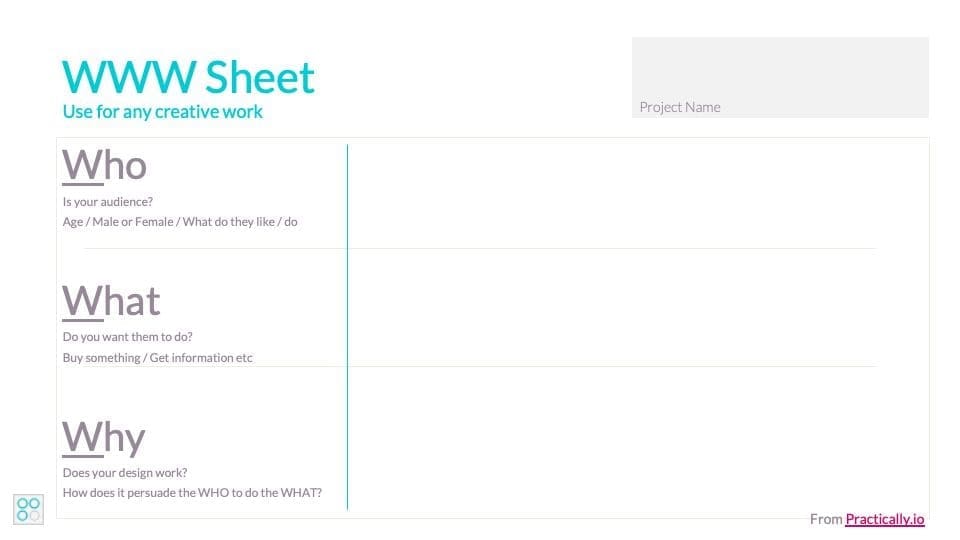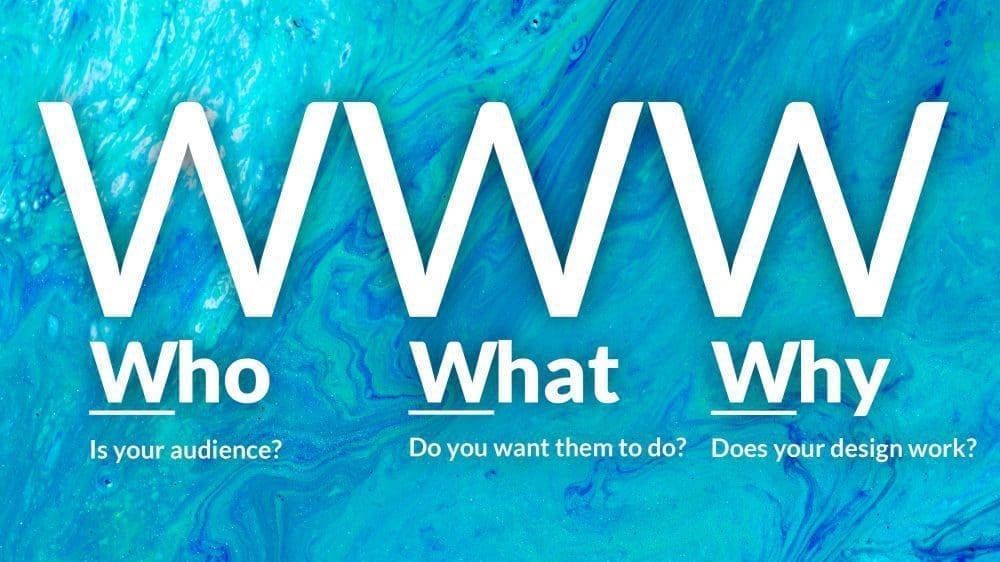I find myself using this tool more and more, for clients, students and colleagues. WWW is another one of those tools and diagrams that come from teaching experience but then become really useful. It is one of those diagrammatic tools I love so much – but it is simple and perhaps could be useful for you too.
What is the WWW?
An evaluation of a marketing creative piece.
WHO
Is your audience?
Age / Sex / What do they like / do
WHAT
Do you want them to do?
Buy something / Get info etc
WHY
Does your creative work?
Does it persuade the
WHO to do the WHAT?
Who is this for and when to use it?
Any time you have done a creative piece of work.
If you have created a web design, a poster, an artwork or campaign of any sort.
Who for starts with designers. This method was developed for a web design module at University of Worcester. And we use this method as part of the peer review design process. It can work for clients and art directors when presented with a piece of creative work. In short anything where the end user is not you, which for the design world should be most of the time.
What makes a great SEO copywriting piece?
Where it has come in really handy lately is on briefing in and approving articles, especially for SEO purposes. Let us say your copywriter or someone else in your organisation has handed you a piece of copy for your website. Let’s also say they expect this to be a high ranking piece of content. You might mutter something about the lack of keyword or phrases which mean that your intended audience may never find your article. Or perhaps you may be tempted to change or add to the heading. But the true test is whether you would read this, whether you might share it and recommend it. Would you also do these things if you were not part of your organisation?
You might be thinking here that you do not matter – it is your audience that matters. And you would be right. You should indeed imagine WHO your audience might be, and what they may think of the article. Would the WHO be persuaded to do the WHAT? But the chances are you are not so very far from your audience – good content is good content. That last article on the menopause, for example, may not be for you but you can tell if it is a good, useful piece whoever you are.
With SEO the primary user is of course Google and other search engines. These are gatekeepers to your users and therefore they are a key, almost primary user. So again “WHY should the WHO do the WHAT” translates to “Why should Google put your article at the top of the page for a particular search term”. Of course there is an entire industry built on this very question, but all you have to do is think like Google. All it is told to do is find the BEST page on the entire web to match that search term. What BEST means should wait for another post.
Why should you use WWW?
Like all good tools it is really simple, really quick but insightful. It takes less than 5 minutes, is really easy to remember and works with anything you have to hand – from whiteboard to Zoom screen to a scrappy piece of paper. Sticky notes are my preferred.
If other parties are involved, for example that poor copywriter, then the WWW is a good way of working through feedback in a brutal and impersonal way.
If you note this article is laid out as a WWW sheet. Just like any landing page should be:
- Who: You are in the right place and this is for you
- What: What do I do next?
- Why: Social proof and all those other tricks to convince users
We have loads of tricks to get User Centric design into the heart of what we do. Why not book a call and see how we can help you?


